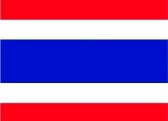All Categories
Great Exploration Hoaxes (Modern Library Exploration)
Share Tweet








About Great Exploration Hoaxes
Product Description Did Peary reach the North Pole? Was Admiral Byrd the first to fly over it? Did Frederick Cook actually make the first ascent of Mt. McKinley? Spanning 450 years of history, Great Exploration Hoaxes tells the spellbinding stories of ten men who pursued glory at any cost even the truth. Acclaimed author and explorer David Roberts delves deeply into the psychology behind the stunt and asks why these individuals, all of whom were exceptionally able, would perpetrate fraud on such a grand and public scale and defend it to their deaths, even in the face of damning evidence, and why these dubious achievements are still so hotly debated, often hundreds of years afterward. Demonstrating that the qualities that brought an individual so close to his goal were often the same ones that drove him to fake success, Great Exploration Hoaxes is history at its best: entertaining, provocative, and revealing of human nature. David Roberts is the author of thirteen books, the most recent of which are A Newer World: Kit Carson, John C. Fremont, and the Claiming of the American West and True Summit: What Really Happened on the Legendary Ascent of Annapurna. He was also responsible for the rediscovery of the lost Arctic classic In the Land of White Death, by Valerian Albanov, published in English for the first time in 2000 by The Modern Library. In the 1960s and 1970s, Roberts led or co-led thirteen Alaskan mountaineering expeditions, making such first ascents as the west face of Mount Huntington, Shot Tower, and the direct north face of Denali. Review "Roberts has written about adventure, archaeology, and literature for National Geographic Adventure, Outside, Atlantic Monthly, The New York Times Magazine, National Geographic, and other magazines. A very amusing idea and excellently carried out." From the Inside Flap ach the North Pole? Was Admiral Byrd the first to fly over it? Did Frederick Cook actually make the first ascent of Mt. McKinley? Spanning 450 years of history, Great Exploration Hoaxes tells the spellbinding stories of ten men who pursued glory at any cost even the truth. Acclaimed author and explorer David Roberts delves deeply into the psychology behind the stunt and asks why these individuals, all of whom were exceptionally able, would perpetrate fraud on such a grand and public scale and defend it to their deaths, even in the face of damning evidence, and why these dubious achievements are still so hotly debated, often hundreds of years afterward. Demonstrating that the qualities that brought an individual so close to his goal were often the same ones that drove him to fake success, Great Exploration Hoaxes is history at its best: entertaining, provocative, and revealing of human nature. David Roberts is the author of thirteen books, the most recent of which are A Newer From the Back Cover "Roberts has written about adventure, archaeology, and literature for National Geographic Adventure, Outside, Atlantic Monthly, The New York Times Magazine, National Geographic, and other magazines. A very amusing idea and excellently carried out." About the Author Walter Bonatti was born in Bergamo, Italy, in 1930. A well-known photographer and author, he received the Legion d’Honneur in 1961 for his heroic rescue of two fellow climbers on an expedition on which four other perished. He lives in Italy. Excerpt. © Reprinted by permission. All rights reserved. Chapter 1 Sebastian Cabot and the Northwest Passage In 1508, Sebastian Cabot set sail from Bristol with three hundred men in two ships. He crossed the Atlantic quickly, visited the great fishing grounds of the Newfoundland Banks, familiar to Bristol men for about a decade, and made a landfall. Cabot had more serious exploratory ambitions, however, and soon pushed on toward the northwest, coasting along the shores of Labrador. He found the ice-clogged passage that would come to be called Hudson Strait, drifted through it, and entered the open wat


























